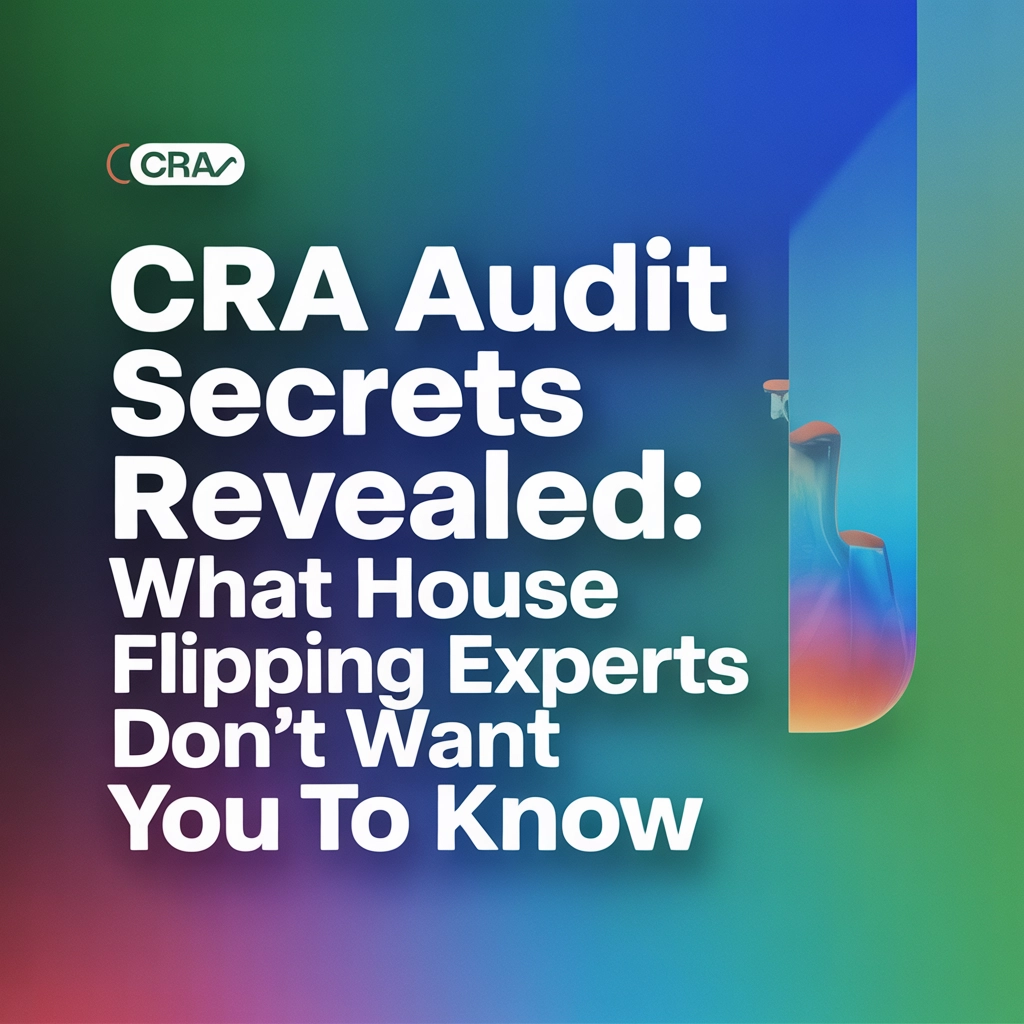
The Canada Revenue Agency has dramatically escalated its enforcement activities against property flippers, conducting over 60,000 audits that have resulted in more than $2 billion in taxes and penalties assessed. Understanding how the CRA identifies and targets property flippers can help you navigate these waters legally and ensure compliance with your tax obligations.
How the CRA Identifies Property Flippers
The CRA has developed sophisticated methods to track property transactions and identify potential flippers. They actively monitor property transactions by reviewing land title records, tracking names that appear and disappear from property ownership, and cross-referencing this information with tax returns. If a taxpayer has not reported a sale, the CRA may initiate an audit immediately.

The agency maintains access to comprehensive databases that allow them to spot patterns across multiple transactions. This systematic approach has enabled them to recover $1.4 billion from real estate audit activities in Ontario alone between April 2015 and March 2023.
The CRA’s data-matching capabilities extend beyond simple property records. They can correlate information from multiple sources, including:
- Municipal property tax records
- Real estate board listings
- Mortgage lending data
- Construction permits and inspection records
- Business registration databases
The Broadened Definition of House Flipping
The One-Year Rule: The CRA has significantly broadened its interpretation of what constitutes house flipping. They now consider all sales within one year of purchase as potential house flipping activities. However, owning a property for two, three, or more years does not automatically shield you from being classified as a flipper.
Intent-Based Assessment: Property flipping occurs when someone purchases real estate with the intention of reselling it for profit. Even if profit was not the primary intention, having it as a secondary motivation that influenced the purchase decision can constitute flipping under CRA interpretation.
The determination of intent involves examining several factors:
- The length of time the property was owned
- The nature and frequency of transactions
- The taxpayer’s profession or expertise in real estate
- The amount of time and effort spent on the property
- The circumstances surrounding the purchase and sale

Who Gets Targeted Most
The CRA particularly focuses on individuals who work in construction or real estate. These professionals face heightened scrutiny because their industry knowledge and connections are viewed as advantages in property speculation. Real estate agents, contractors, developers, and anyone with construction expertise should expect closer examination of their personal property transactions.
Additionally, the CRA targets:
- Individuals with multiple property transactions within short time frames
- Those claiming extensive renovation expenses as capital improvements
- Taxpayers who purchase properties through corporations or partnerships
- Anyone showing patterns of quick property acquisitions and disposals
Mandatory Reporting Requirements
Since 2016, a critical change has occurred: all taxpayers must report the sale of their principal residence on their annual tax return. This reporting requirement gives the CRA complete visibility into property sales, even those claimed under the principal residence exemption.
The reporting obligation applies regardless of whether you claim the principal residence exemption or whether any tax is owing on the sale. Failure to report can result in penalties and increased scrutiny from the CRA.
The Principal Residence Exemption Challenge
The CRA frequently challenges the use of the principal residence exemption in property flipping cases. When a sale is classified as inventory or business income, it becomes fully taxable and the principal residence exemption cannot apply. This means the entire gain gets taxed as regular income rather than receiving preferential capital gains treatment.

Key considerations for the principal residence exemption include:
- The property must be ordinarily inhabited by you or your family
- You can only designate one property per year as your principal residence
- The exemption covers the period during which the property was your principal residence
- Documentation must support your claim of personal use and habitation
Red Flags That Trigger Audits
Several behaviors increase your audit risk and should be approached with caution:
Financial Inconsistencies:
- Unusually high credits or deductions showing dramatic year-over-year changes
- Income levels that appear inconsistent with lifestyle or property acquisitions
- Large cash transactions without clear documentation of source
Excessive Claims:
- Excessive home office deductions that seem unreasonable for actual space usage
- 100% vehicle write-offs when personal use is clearly involved
- Claiming all carrying costs as deductible expenses
Communication Issues:
- Failing to respond promptly to CRA requests for information
- Providing incomplete or inconsistent documentation
- Making contradictory statements in different tax years
Documentation Strategy
The key to surviving a CRA audit lies in comprehensive documentation. You should maintain detailed records showing:
Purchase Intent Documentation:
- Real estate listings and marketing materials you reviewed
- Communications with real estate agents about your housing needs
- Moving records and change of address notifications
- Utility connection and service establishment records
Personal Use Evidence:
- Photographs showing personal belongings and living arrangements
- Mail delivery records to the property address
- Children’s school enrollment records
- Voter registration information
Circumstantial Changes:
- Employment records showing job changes or relocations
- Medical records documenting health issues requiring relocation
- Divorce or separation agreements
- Financial hardship documentation

Having proper documentation ready before an audit begins significantly improves your position and demonstrates good faith compliance with tax obligations.
Legitimate Reasons for Quick Sales
There are valid reasons for selling a home shortly after purchase that will not trigger flipping assessments. Life events such as job changes, financial setbacks, health issues, or divorce often necessitate selling a property quickly. In these cases, homeowners can typically rely on the principal residence exemption successfully, provided they maintain proper documentation.
The CRA recognizes that unexpected circumstances can force property sales, but the burden of proof lies with the taxpayer to demonstrate that the original purchase was not made with flipping intent.
Professional Guidance Matters
The CRA’s aggressive pursuit of property flippers reflects their determination to capture substantial amounts of previously unreported house flipping income. The complexity of tax law surrounding real estate transactions, combined with the CRA’s sophisticated audit techniques, makes professional guidance essential for anyone involved in property transactions.

Property transactions involve intricate legal and tax considerations that extend far beyond simple buy-and-sell decisions. Understanding the interplay between tax law, real estate law, and CRA enforcement practices requires specialized expertise that can protect your interests and ensure compliance.
If you are involved in property transactions or facing questions about your real estate activities, proper legal and tax advice becomes crucial. The stakes are too high, and the rules too complex, to navigate without professional guidance. Contact Beganyi Professional Corporation to discuss your specific situation and ensure your property transactions comply with all applicable tax and legal requirements.

